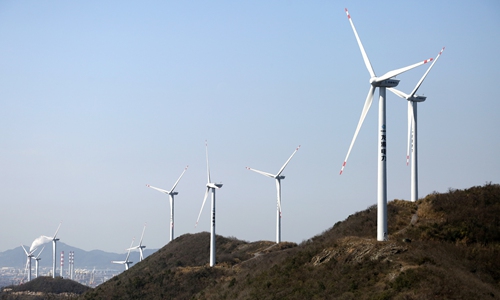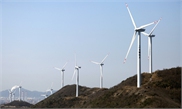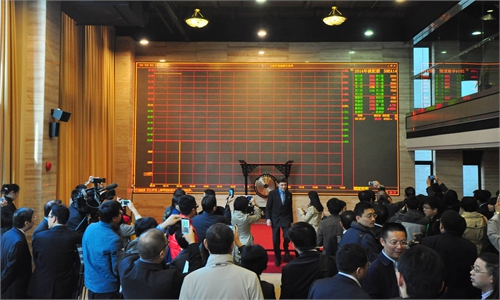
17 turbines generate electricity at the Jintangfeng wind farm in Zhoushan, East China’s Zhejiang Province. File Photo: cnsphoto
China's Ministry of Ecology and Environment (MEE) on Tuesday released pilot rules for carbon emission trading management, which will come into effect on February 1.
The rules will provide a legal basis for national carbon emission rights trading and relevant activities.
According to the guideline, the MEE will be responsible for establishing organizations for the registration, trading and settlement of national carbon emission rights.
The registration organization will record changes in carbon emission quotas that are assigned to companies, while the trading organization is responsible for the national trading of carbon emission rights.
Beyond carbon emission quotas, the MEE can add new products based on relevant regulations.
The document states that key carbon emission companies are those from industries that the national carbon emission rights trading market covers and have annual greenhouse gas emissions of at least 26,000 tons of carbon dioxide.
The MEE sets total carbon emission quotas and their distribution method by comprehensively considering factors such as economic growth, industrial structure adjustment and coordinated control of gas pollutant emission.
Key carbon emission companies that failed to correctly report their carbon emission or refuse to do so will face fines between 10,000 yuan ($1,548) and 30,000 yuan, according to the document.
China has made progress in reducing carbon emissions in recent years. Following the establishment of China Emissions Exchange (Guangzhou), the largest local carbon market in China, in 2013, the securities regulator recently announced that it had set up a working group to launch a new futures exchange in Guangzhou, South China's Guangdong Province, with first product expected to be carbon emissions.
During the Climate Ambition Summit in December 2020, China revealed its further commitments for 2030 in a bid to contribute more to tackling the global climate challenge.
The country has committed to lower its carbon dioxide emissions per unit of GDP by over 65 percent from the 2005 level, increase the share of non-fossil fuels in primary energy consumption to around 25 percent, the Xinhua News Agency reported.
The country aims to peak carbon dioxide emissions before 2030 and achieve carbon neutrality before 2060.



